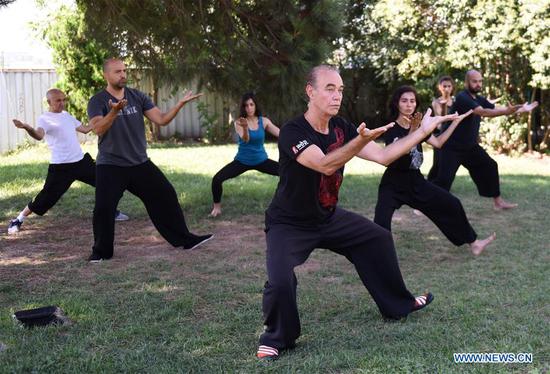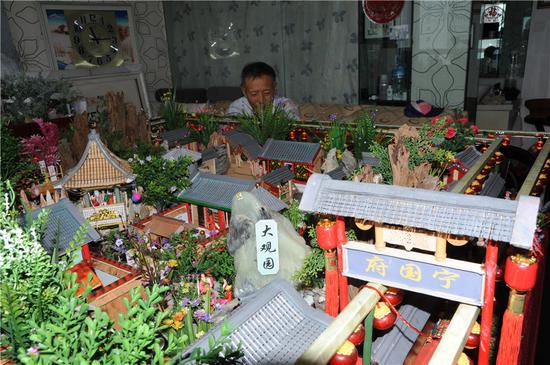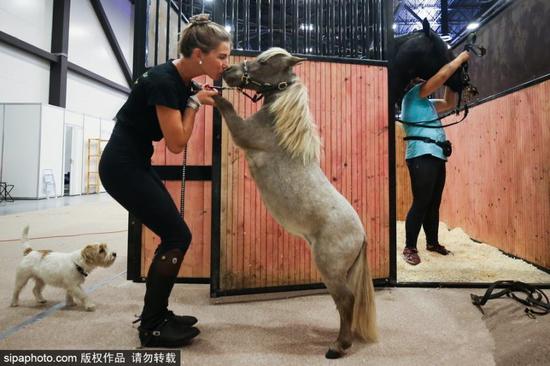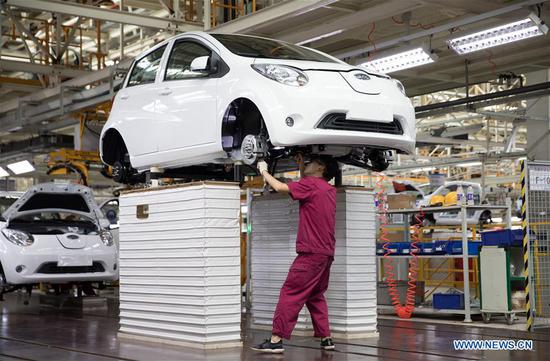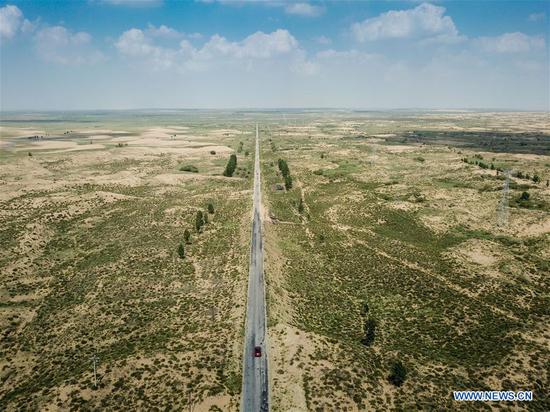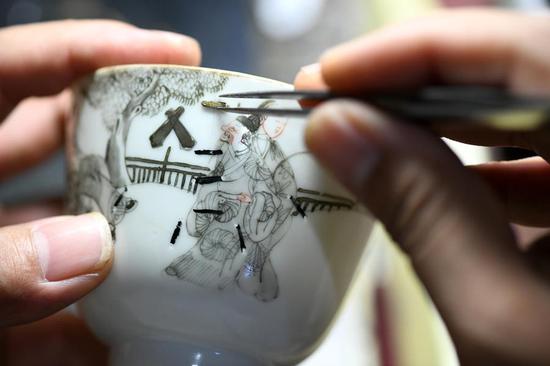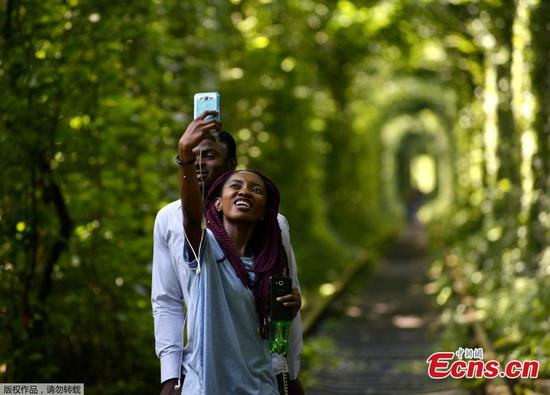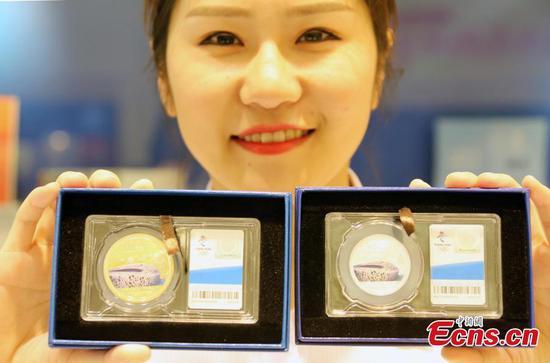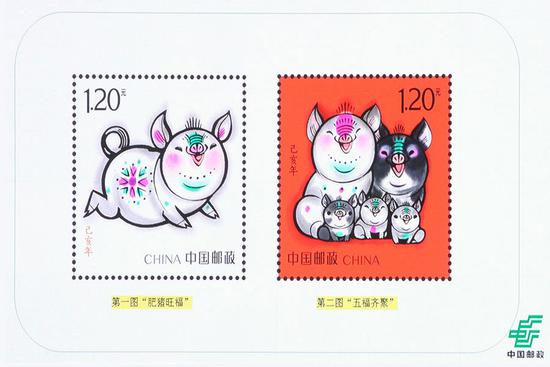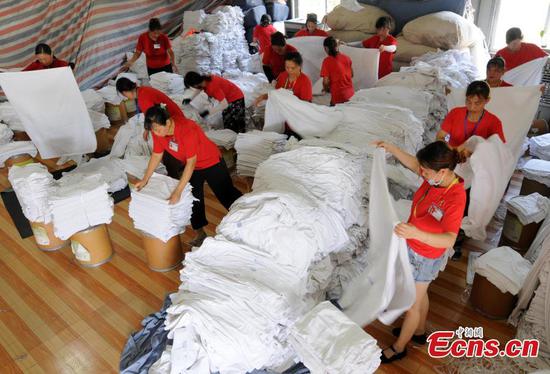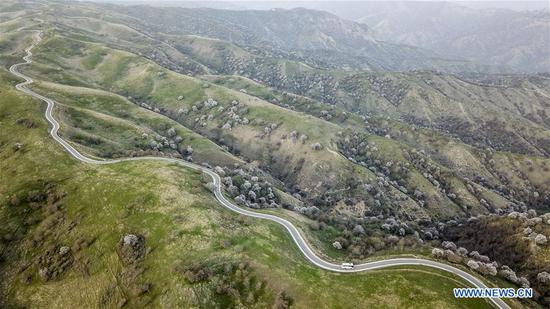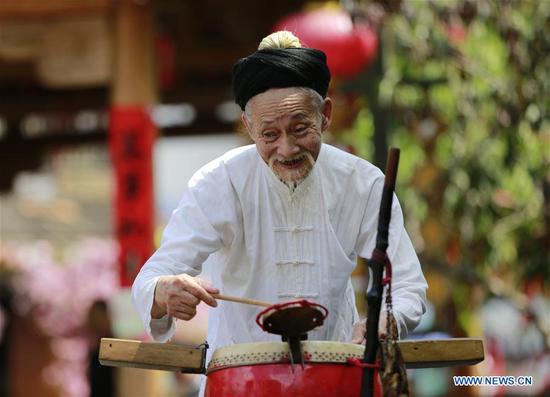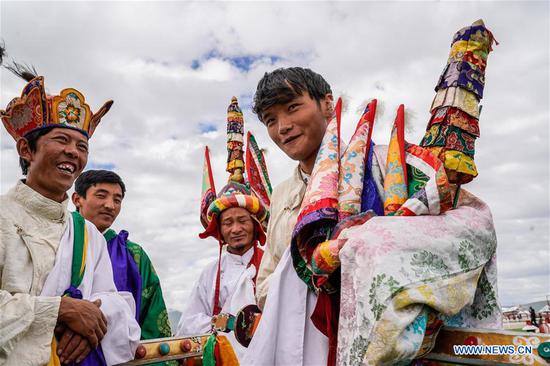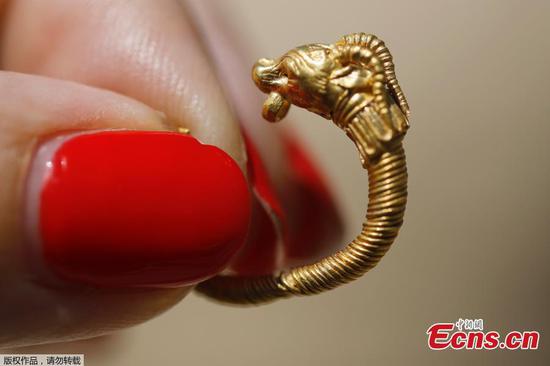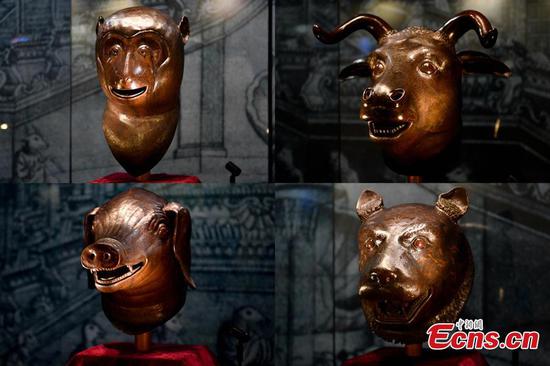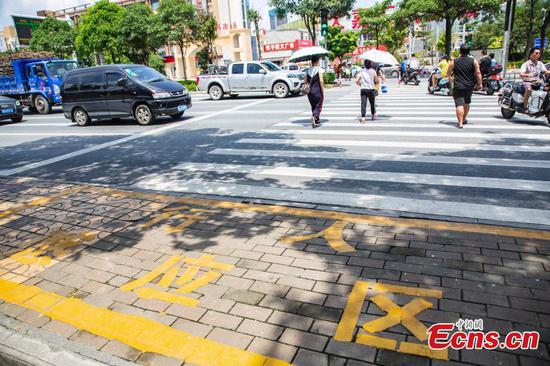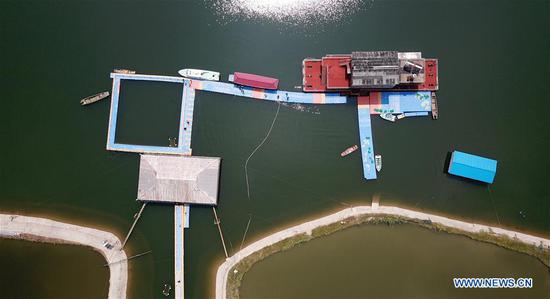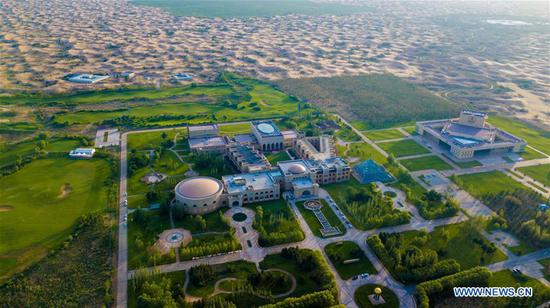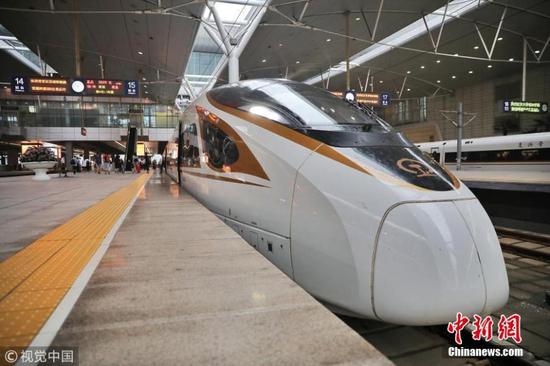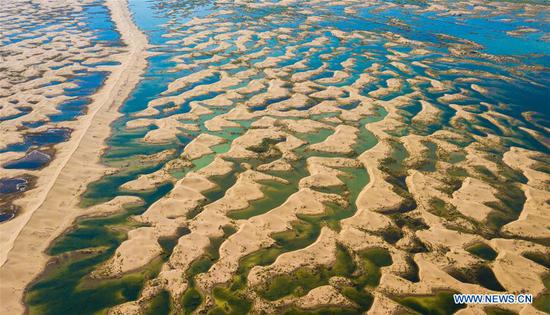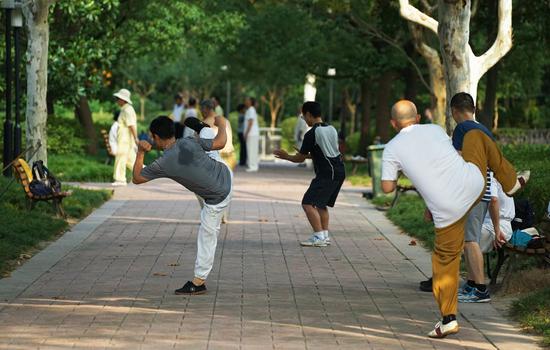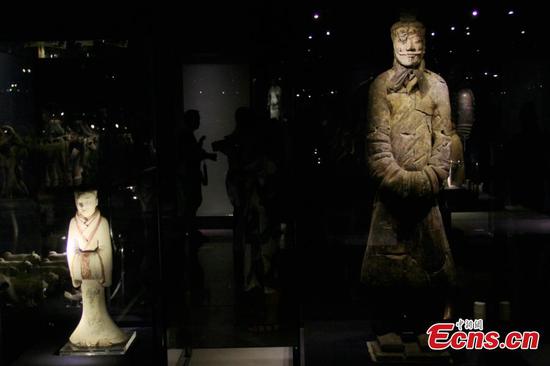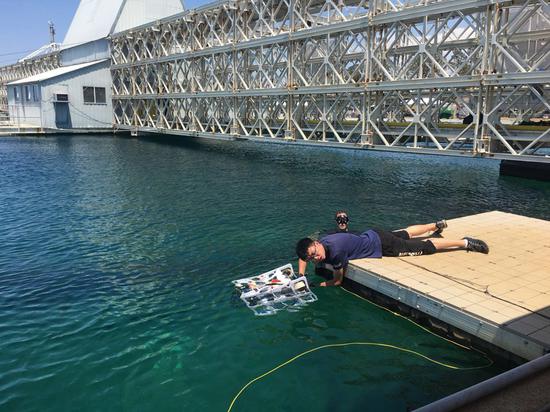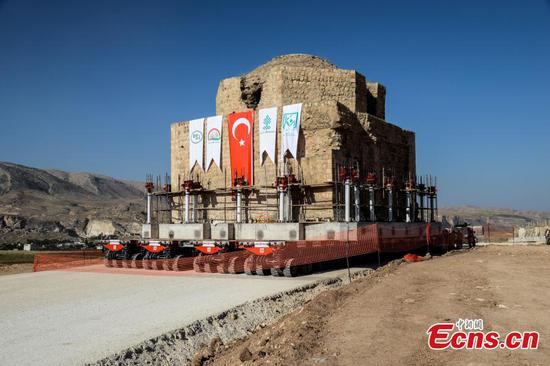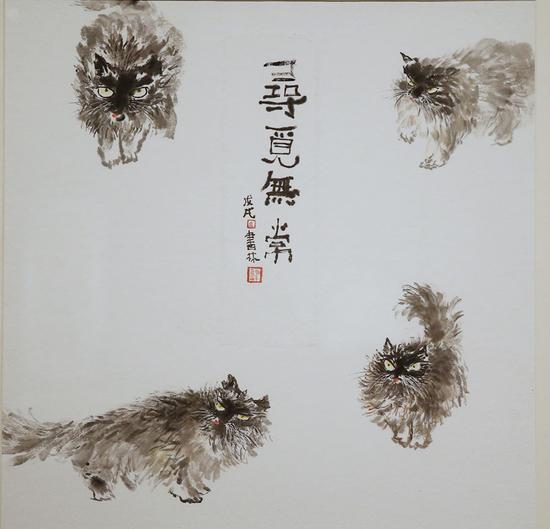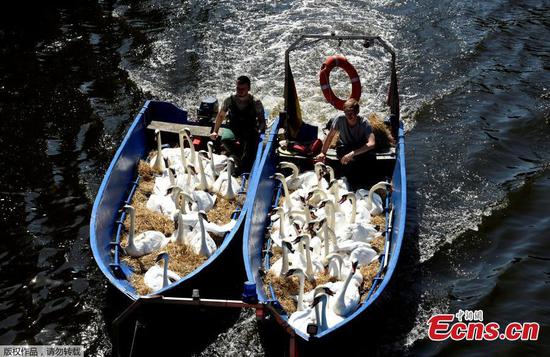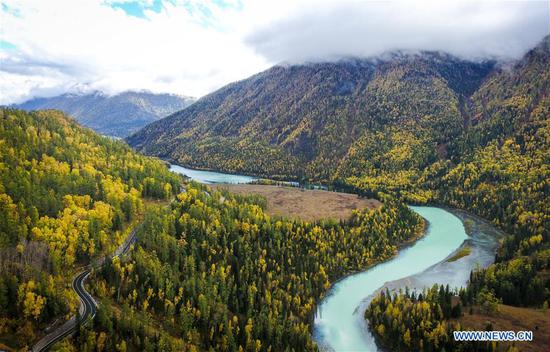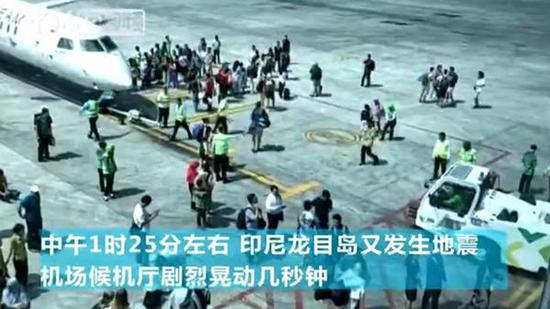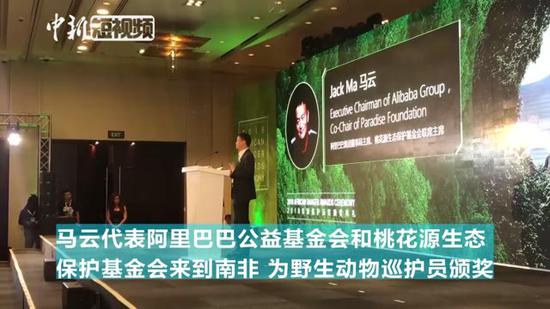
An artist's illustration shows what the National Aquatics Center will look like after renovations for the 2022 Winter Games, when it will host the curling competition. (Photo/CHINA DAILY)
Beijing's construction regulatory body confirmed on Thursday that transformation of five existing venues for the 2022 Winter Olympics has started with an emphasis on diversifying their post-Games functions.
The National Indoor Stadium in Beijing's Olympic Park has drifted away from the athletic spotlight since it was taken over in 2010 by the Beijing Performance and Arts Group, mainly a host for concerts and shows.
The stadium, built for gymnastics, trampoline and handball for the 2008 Summer Olympics, is now buzzing with activity to prepare it as the venue for men's ice hockey events in the 2022 Olympics.
The stadium and nearby National Aquatics Center or Water Cube are among the five existing venues in downtown Beijing being transformed for competition and noncompetition purposes at the 2022 Games, according to the Beijing Major Projects Construction Headquarters Office.
"The transformation of all five venues will be implemented sticking to core principles of cost-efficiency, energy savings, high-tech and sustainability," said Huang Hui, director of the office's urban construction department.
"The venues will be able not only to host winter and summer sports competitions but also stage various events to serve the public and commercial purposes."
The indoor stadium, with a capacity of 18,000, will use a water-source heat pump system for temperature control and cooling for its ice rink. It will be more energy-efficient and environmentally friendly due to extracting or dissipating heat using water, according to the office.
Other major upgrades include the replacement of some of the venue's current structures with glass walls, to maximize natural lighting, and a new air-purifying system.
The aquatics center, used for swimming and diving for the 2008 Games, will become an ice cube to host the curling competition for 2022, with the transformation to be completed in the second half of 2019, according to the venue owner.
"To transform a summer sport venue into a curling arena capable of hosting ice-based sports and entertainment activities helps diversify the functions and revenue sources of this facility," said Yang Qiyong, general manager of the center.
The changes involve filling the pool with steel structures, leveling the ground with a retractable layer of concrete and producing ice surfaces. After completion of upgrades in power supply, humidity control and cooling systems, it will take about a month to switch it to ice or to return it to a swimming pool.
However, the venue team has to overcome challenges in temperature control to keep the ground cold enough for ice while the upper layers stay warm enough for spectators, Yang said.
As the oldest of 26 venues for 2022 in three zones - downtown Beijing, Yanqing district and co-host Zhangjiakou - the Capital Gymnasium, built in 1968, will stage short-track speed skating and figure skating at the Winter Olympics after having played host to commercial skating shows such as 2016 Amazing on Ice.
The transformation will focus on upgrading the venue's interior and the sound and lighting systems while maintaining its time-honored exterior look, according to the plan.
The upgrades of three more Beijing 2008 venues - the National Stadium or Bird's Nest, the Wukesong Arena and the National Conventional Center - will take place in 2020. They will be repurposed, respectively, for the 2022 opening and closing ceremonies, women's ice hockey and media operations.











